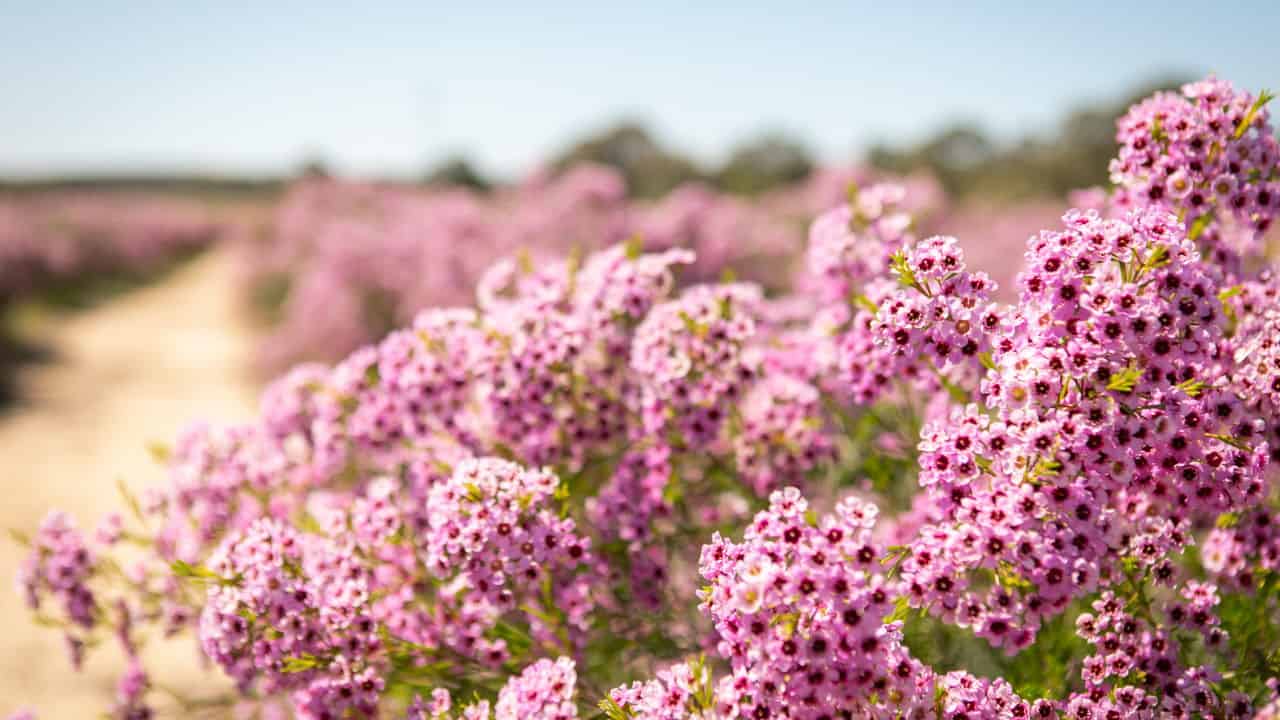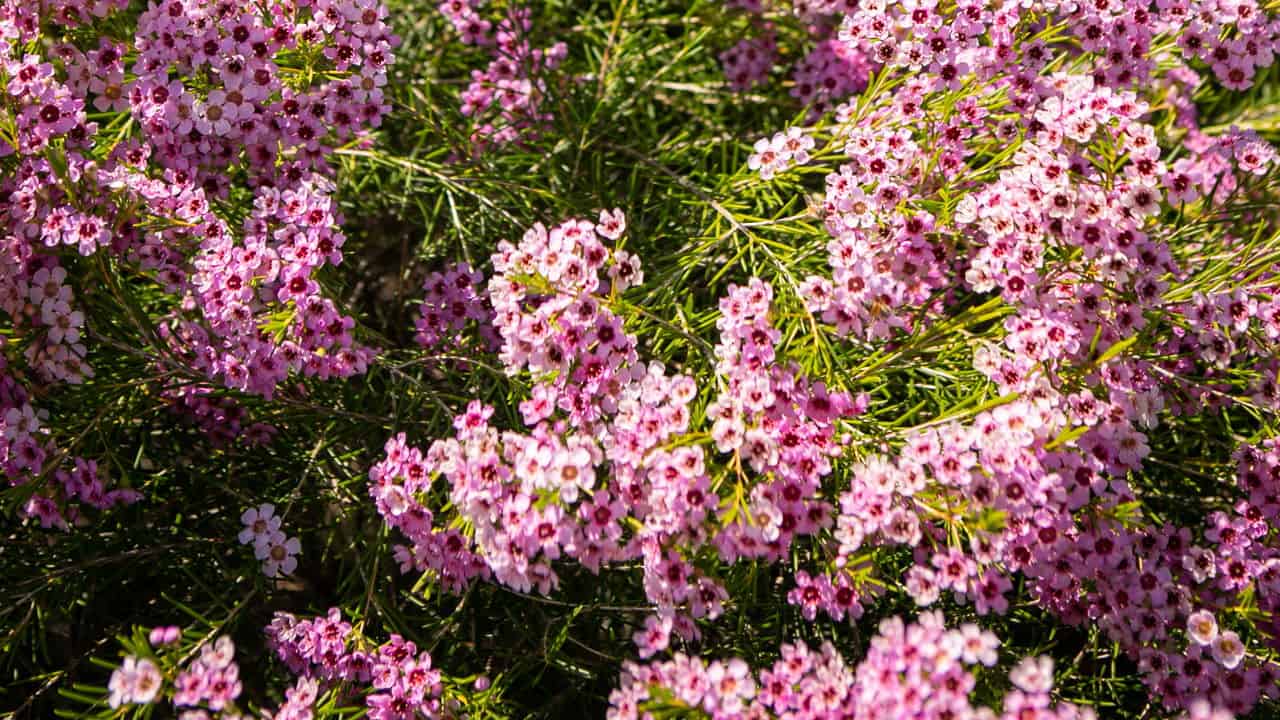Jambinu Zest
Chamelaucium “Jambinu Zest”
Jambinu Zest is a type of Geraldton Wax, a widely cultivated flowering shrub native to Western Australia. While commercial varieties of Geraldton Wax are commonly identified by their ornamental qualities, this bushfood herb gets its name from the Yamatji name for its home region and its strong citrus flavour. In the wild, you can find this species growing in sandy soils in woodland and heath regions in southwest WA.
Jambinu Zest is said to be the world’s best culinary Geraldton Wax, with its edible needle-like leaves and waxy flowers similar in flavour to a Lemon Myrtle. Developed especially for culinary purposes, it brings a tangy and pleasant, “uniquely Australian” characteristic to sauces, stocks, cakes, cocktails and botanical gin.
This variety typically flowers from Winter to Spring, producing masses of dark pink-crimson blooms on tall, thin stems. You can harvest these during the growing season, while also enjoying the Jambinu Zest leaves anytime throughout the year. Strip off the leaves and use them fresh and whole in your dishes, or sprinkle them on top as a garnish.
Jambinu Zest is an evergreen shrub, ideal for Mediterranean climates, preferring dry climates, sandy soils, and full-sun (or slight shade). It is a very heat-tolerant, drought-tolerant and water-wise bushfood species, though younger plants may need generous watering in their first eight weeks. For best culinary results from an established plant, we recommend a light mulch and fortnightly watering over the warmer months in non-humid regions.
This plant makes an attractive feature shrub, gap filler, or edible hedge. It’s also suitable for pots, typically performing best outdoors or with plenty of sunlight inside.
My Jambinu Zest is getting big but keeps flopping over. Should I be worried about the stems being too soft?
Not at all. The stems and branches of Geraldton Wax shrubs do retain a lot of flexibility, even as the plant matures. Adding a simple support stake to the trunk should help keep your Jambinu Zest upright.
I’ve been told Geraldton Wax flowers don’t taste good. What are Jambinu Zest flowers like?
Many species of waxflower either have no taste or an unpleasant aftertaste, however Jambinu Zest was developed especially for use in the kitchen. Both the flowers and leaves of this variety have a pleasant lemony quality, not too unlike Lemon Myrtle.
Do I need to fertilise my Jambinu Zest?
Even though Jambinu Zest can thrive in the wild with very little care, we recommend applying a little slow-release fertiliser once a year in spring.
This Plant Is Available As A Dried Herb From Our Shop

Suitable for full-sun

Suitable for part-shade

Dimensions:
Height 2m
Width 1.5m

Tolerates drought

Tolerates sandy soils

Bird attracting

Attracts bees & insects

Suitable for gaps

Suitable for hedging/screening


